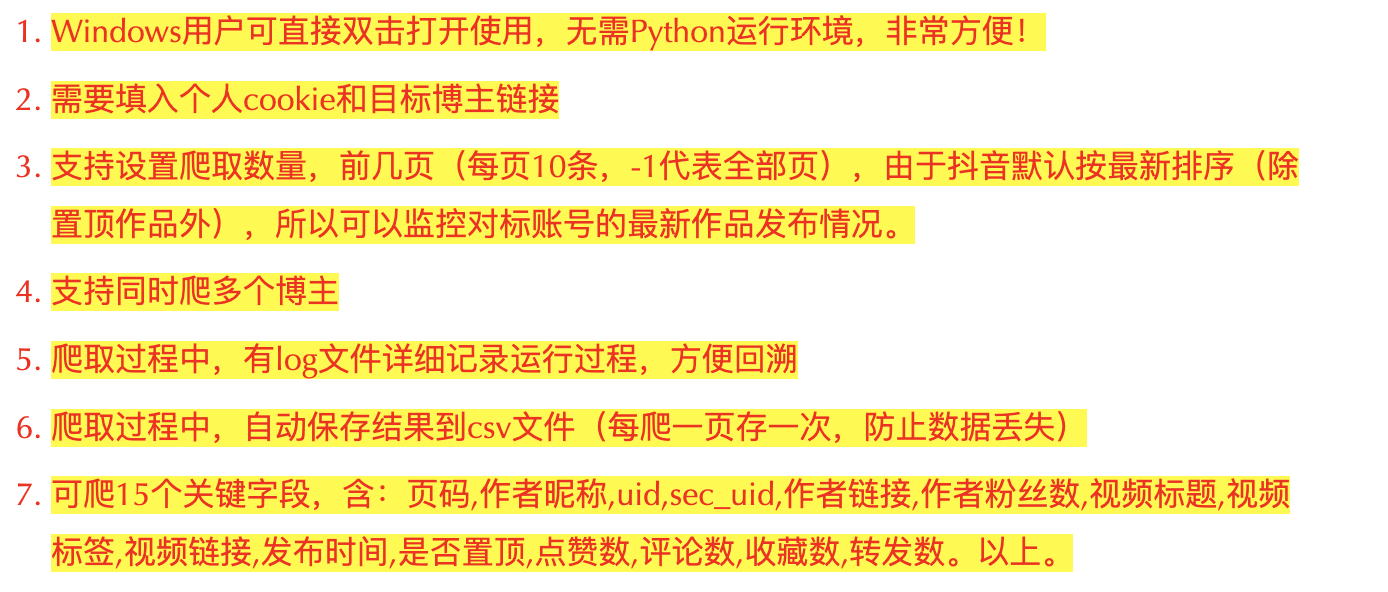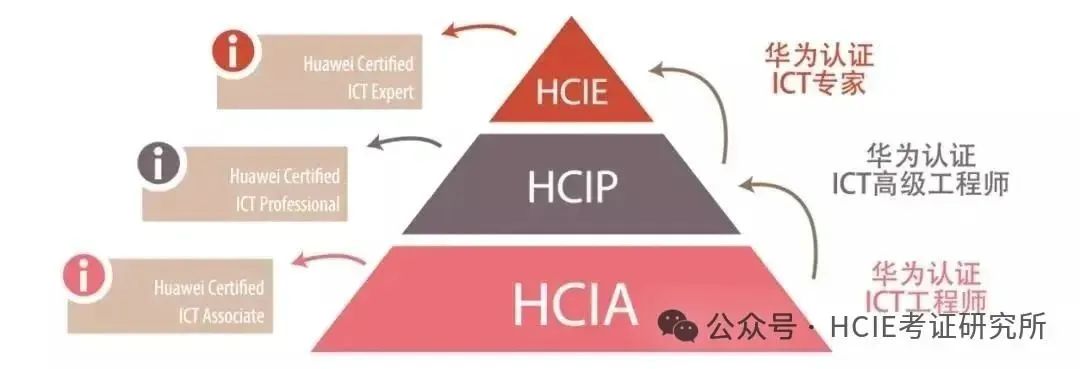ggml是一个用 C 和 C++ 编写、专注于 Transformer 架构模型推理的机器学习库。该项目完全开源,处于活跃的开发阶段,开发社区也在不断壮大。ggml 和 PyTorch、TensorFlow 等机器学习库比较相似,但由于目前处于开发的早期阶段,一些底层设计仍在不断改进中。
ggmlhttps://github.com/ggerganov/ggml
相比于llama.cpp和whisper.cpp等项目,ggml 也在一直不断广泛普及。为了实现端侧大语言模型推理,包括ollama、jan、LM Studio等很多项目内部都使用了 ggml。
llama.cpphttps://github.com/ggerganov/llama.cpp
whisper.cpphttps://github.com/ggerganov/whisper.cpp
ollamahttps://github.com/ollama/ollama
janhttps://github.com/janhq/jan
LM Studiohttps://github.com/lmstudio-ai
相比于其它库,ggml 有以下优势:
最小化实现: 核心库独立,仅包含 5 个文件。如果你想加入 GPU 支持,你可以自行加入相关实现,这不是必选的。
编译简单: 你不需要花哨的编译工具,如果不需要 GPU,单纯 GGC 或 Clang 就可以完成编译。
轻量化: 编译好的二进制文件还不到 1MB,和 PyTorch (需要几百 MB) 对比实在是够小了。
兼容性好: 支持各类硬件,包括 x86_64、ARM、Apple Silicon、CUDA 等等。
支持张量的量化: 张量可以被量化,以此节省内存,有些时候甚至还提升了性能。
内存使用高效到了极致: 存储张量和执行计算的开销是最小化的。
当然,目前 ggml 还存在一些缺点。如果你选择 ggml 进行开发,这些方面你需要了解 (后续可能会改进):
并非任何张量操作都可以在你期望的后端上执行。比如有些 CPU 上可以跑的操作,可能在 CUDA 上还不支持。
使用 ggml 开发可能没那么简单直接,因为这需要一些比较深入的底层编程知识。
该项目仍在活跃开发中,所以有可能会出现比较大的改动。
本文将带你入门 ggml 开发。文中不会涉及诸如使用 llama.cpp 进行 LLM 推理等的高级项目。相反,我们将着重介绍 ggml 的核心概念和基本用法,为想要使用 ggml 的开发者们后续学习高级开发打好基础。
开始学习
我们先从编译开始。简单起见,我们以在 Ubuntu 上编译 ggml 作为示例。当然 ggml 支持在各类平台上编译 (包括 Windows、macOS、BSD 等)。指令如下:
# Start by installing build dependencies
# "gdb" is optional, but is recommended
sudo apt install build-essential cmake git gdb# Then, clone the repository
git clone https://github.com/ggerganov/ggml.git
cd ggml# Try compiling one of the examples
cmake -B build
cmake --build build --config Release --target simple-ctx# Run the example
./build/bin/simple-ctx期望输出:
mul mat (4 x 3) (transposed result):
[ 60.00 55.00 50.00 110.0090.00 54.00 54.00 126.0042.00 29.00 28.00 64.00 ]看到期望输出没问题,我们就继续。
术语和概念
首先我们学习一些 ggml 的核心概念。如果你熟悉 PyTorch 或 TensorFlow,这可能对你来说有比较大的跨度。但由于 ggml 是一个 低层 的库,理解这些概念能让你更大幅度地掌控性能。
ggml_context: 一个装载各类对象 (如张量、计算图、其他数据) 的“容器”。https://github.com/ggerganov/ggml/blob/18703ad600cc68dbdb04d57434c876989a841d12/include/ggml.h#L355
ggml_cgraph: 计算图的表示,可以理解为将要传给后端的“计算执行顺序”。https://github.com/ggerganov/ggml/blob/18703ad600cc68dbdb04d57434c876989a841d12/include/ggml.h#L652
ggml_backend: 执行计算图的接口,有很多种类型: CPU (默认) 、CUDA、Metal (Apple Silicon) 、Vulkan、RPC 等等。https://github.com/ggerganov/ggml/blob/18703ad600cc68dbdb04d57434c876989a841d12/src/ggml-backend-impl.h#L80
ggml_backend_buffer_type: 表示一种缓存,可以理解为连接到每个
ggml_backend的一个“内存分配器”。比如你要在 GPU 上执行计算,那你就需要通过一个buffer_type(通常缩写为buft) 去在 GPU 上分配内存。https://github.com/ggerganov/ggml/blob/18703ad600cc68dbdb04d57434c876989a841d12/src/ggml-backend-impl.h#L18ggml_backend_buffer: 表示一个通过
buffer_type分配的缓存。需要注意的是,一个缓存可以存储多个张量数据。https://github.com/ggerganov/ggml/blob/18703ad600cc68dbdb04d57434c876989a841d12/src/ggml-backend-impl.h#L52ggml_gallocr: 表示一个给计算图分配内存的分配器,可以给计算图中的张量进行高效的内存分配。https://github.com/ggerganov/ggml/blob/18703ad600cc68dbdb04d57434c876989a841d12/include/ggml-alloc.h#L46
ggml_backend_sched: 一个调度器,使得多种后端可以并发使用,在处理大模型或多 GPU 推理时,实现跨硬件平台地分配计算任务 (如 CPU 加 GPU 混合计算)。该调度器还能自动将 GPU 不支持的算子转移到 CPU 上,来确保最优的资源利用和兼容性。https://github.com/ggerganov/ggml/blob/18703ad600cc68dbdb04d57434c876989a841d12/include/ggml-backend.h#L169
简单示例
这里的简单示例将复现第一节最后一行指令代码中的示例程序。我们首先创建两个矩阵,然后相乘得到结果。如果使用 PyTorch,代码可能长这样:
import torch# Create two matrices
matrix1 = torch.tensor([[2, 8],[5, 1],[4, 2],[8, 6],
])
matrix2 = torch.tensor([[10, 5],[9, 9],[5, 4],
])# Perform matrix multiplication
result = torch.matmul(matrix1, matrix2.T)
print(result.T)使用 ggml,则需要根据以下步骤来:
分配一个
ggml_context来存储张量数据分配张量并赋值
为矩阵乘法运算创建一个
ggml_cgraph执行计算
获取计算结果
释放内存并退出
请注意: 本示例中,我们直接在 ggml_context 里分配了张量的具体数据。但实际上,内存应该被分配成一个设备端的缓存,我们将在下一部分介绍。
我们先创建一个新文件夹 examples/demo ,然后执行以下命令创建 C 文件和 CMake 文件。
cd ggml # make sure you're in the project root# create C source and CMakeLists file
touch examples/demo/demo.c
touch examples/demo/CMakeLists.txt本示例的代码是基于simple-ctx.cpp的。
simple-ctx.cpphttps://github.com/ggerganov/ggml/blob/6c71d5a071d842118fb04c03c4b15116dff09621/examples/simple/simple-ctx.cpp
编辑 examples/demo/demo.c ,写入以下代码:
#include "ggml.h"
#include <string.h>
#include <stdio.h>int main(void) {// initialize data of matrices to perform matrix multiplicationconst int rows_A = 4, cols_A = 2;float matrix_A[rows_A * cols_A] = {2, 8,5, 1,4, 2,8, 6};const int rows_B = 3, cols_B = 2;float matrix_B[rows_B * cols_B] = {10, 5,9, 9,5, 4};// 1. Allocate `ggml_context` to store tensor data// Calculate the size needed to allocatesize_t ctx_size = 0;ctx_size += rows_A * cols_A * ggml_type_size(GGML_TYPE_F32); // tensor actx_size += rows_B * cols_B * ggml_type_size(GGML_TYPE_F32); // tensor bctx_size += rows_A * rows_B * ggml_type_size(GGML_TYPE_F32); // resultctx_size += 3 * ggml_tensor_overhead(); // metadata for 3 tensorsctx_size += ggml_graph_overhead(); // compute graphctx_size += 1024; // some overhead (exact calculation omitted for simplicity)// Allocate `ggml_context` to store tensor datastruct ggml_init_params params = {/*.mem_size =*/ ctx_size,/*.mem_buffer =*/ NULL,/*.no_alloc =*/ false,};struct ggml_context * ctx = ggml_init(params);// 2. Create tensors and set datastruct ggml_tensor * tensor_a = ggml_new_tensor_2d(ctx, GGML_TYPE_F32, cols_A, rows_A);struct ggml_tensor * tensor_b = ggml_new_tensor_2d(ctx, GGML_TYPE_F32, cols_B, rows_B);memcpy(tensor_a->data, matrix_A, ggml_nbytes(tensor_a));memcpy(tensor_b->data, matrix_B, ggml_nbytes(tensor_b));// 3. Create a `ggml_cgraph` for mul_mat operationstruct ggml_cgraph * gf = ggml_new_graph(ctx);// result = a*b^T// Pay attention: ggml_mul_mat(A, B) ==> B will be transposed internally// the result is transposedstruct ggml_tensor * result = ggml_mul_mat(ctx, tensor_a, tensor_b);// Mark the "result" tensor to be computedggml_build_forward_expand(gf, result);// 4. Run the computationint n_threads = 1; // Optional: number of threads to perform some operations with multi-threadingggml_graph_compute_with_ctx(ctx, gf, n_threads);// 5. Retrieve results (output tensors)float * result_data = (float *) result->data;printf("mul mat (%d x %d) (transposed result):\n[", (int) result->ne[0], (int) result->ne[1]);for (int j = 0; j < result->ne[1]/* rows */; j++) {if (j > 0) {printf("\n");}for (int i = 0; i < result->ne[0]/* cols */; i++) {printf(" %.2f", result_data[j * result->ne[0] + i]);}}printf(" ]\n");// 6. Free memory and exitggml_free(ctx);return 0;
}然后将以下代码写入 examples/demo/CMakeLists.txt :
set(TEST_TARGET demo)
add_executable(${TEST_TARGET} demo)
target_link_libraries(${TEST_TARGET} PRIVATE ggml)编辑 examples/CMakeLists.txt ,在末尾加入这一行代码:
add_subdirectory(demo)然后编译并运行:
cmake -B build
cmake --build build --config Release --target demo# Run it
./build/bin/demo期望的结果应该是这样:
mul mat (4 x 3) (transposed result):
[ 60.00 55.00 50.00 110.0090.00 54.00 54.00 126.0042.00 29.00 28.00 64.00 ]使用后端的示例
在 ggml 中,“后端”指的是一个可以处理张量操作的接口,比如 CPU、CUDA、Vulkan 等。
后端可以抽象化计算图的执行。当定义后,一个计算图就可以在相关硬件上用对应的后端实现去进行计算。注意,在这个过程中,ggml 会自动为需要的中间结果预留内存,并基于其生命周期优化内存使用。
使用后端进行计算或推理,基本步骤如下:
初始化
ggml_backend分配
ggml_context以保存张量的 metadata (此时还不需要直接分配张量的数据)为张量创建 metadata (也就是形状和数据类型)
分配一个
ggml_backend_buffer用来存储所有的张量从内存 (RAM) 中复制张量的具体数据到后端缓存
为矩阵乘法创建一个
ggml_cgraph创建一个
ggml_gallocr用以分配计算图可选: 用
ggml_backend_sched调度计算图运行计算图
获取结果,即计算图的输出
释放内存并退出
本示例的代码基于simple-backend.cpp:
simple-backend.cpphttps://github.com/ggerganov/ggml/blob/6c71d5a071d842118fb04c03c4b15116dff09621/examples/simple/simple-backend.cpp
#include "ggml.h"
#include "ggml-alloc.h"
#include "ggml-backend.h"
#ifdef GGML_USE_CUDA
#include "ggml-cuda.h"
#endif#include <stdlib.h>
#include <string.h>
#include <stdio.h>int main(void) {// initialize data of matrices to perform matrix multiplicationconst int rows_A = 4, cols_A = 2;float matrix_A[rows_A * cols_A] = {2, 8,5, 1,4, 2,8, 6};const int rows_B = 3, cols_B = 2;float matrix_B[rows_B * cols_B] = {10, 5,9, 9,5, 4};// 1. Initialize backendggml_backend_t backend = NULL;
#ifdef GGML_USE_CUDAfprintf(stderr, "%s: using CUDA backend\n", __func__);backend = ggml_backend_cuda_init(0); // init device 0if (!backend) {fprintf(stderr, "%s: ggml_backend_cuda_init() failed\n", __func__);}
#endif// if there aren't GPU Backends fallback to CPU backendif (!backend) {backend = ggml_backend_cpu_init();}// Calculate the size needed to allocatesize_t ctx_size = 0;ctx_size += 2 * ggml_tensor_overhead(); // tensors// no need to allocate anything else!// 2. Allocate `ggml_context` to store tensor datastruct ggml_init_params params = {/*.mem_size =*/ ctx_size,/*.mem_buffer =*/ NULL,/*.no_alloc =*/ true, // the tensors will be allocated later by ggml_backend_alloc_ctx_tensors()};struct ggml_context * ctx = ggml_init(params);// Create tensors metadata (only there shapes and data type)struct ggml_tensor * tensor_a = ggml_new_tensor_2d(ctx, GGML_TYPE_F32, cols_A, rows_A);struct ggml_tensor * tensor_b = ggml_new_tensor_2d(ctx, GGML_TYPE_F32, cols_B, rows_B);// 4. Allocate a `ggml_backend_buffer` to store all tensorsggml_backend_buffer_t buffer = ggml_backend_alloc_ctx_tensors(ctx, backend);// 5. Copy tensor data from main memory (RAM) to backend bufferggml_backend_tensor_set(tensor_a, matrix_A, 0, ggml_nbytes(tensor_a));ggml_backend_tensor_set(tensor_b, matrix_B, 0, ggml_nbytes(tensor_b));// 6. Create a `ggml_cgraph` for mul_mat operationstruct ggml_cgraph * gf = NULL;struct ggml_context * ctx_cgraph = NULL;{// create a temporally context to build the graphstruct ggml_init_params params0 = {/*.mem_size =*/ ggml_tensor_overhead()*GGML_DEFAULT_GRAPH_SIZE + ggml_graph_overhead(),/*.mem_buffer =*/ NULL,/*.no_alloc =*/ true, // the tensors will be allocated later by ggml_gallocr_alloc_graph()};ctx_cgraph = ggml_init(params0);gf = ggml_new_graph(ctx_cgraph);// result = a*b^T// Pay attention: ggml_mul_mat(A, B) ==> B will be transposed internally// the result is transposedstruct ggml_tensor * result0 = ggml_mul_mat(ctx_cgraph, tensor_a, tensor_b);// Add "result" tensor and all of its dependencies to the cgraphggml_build_forward_expand(gf, result0);}// 7. Create a `ggml_gallocr` for cgraph computationggml_gallocr_t allocr = ggml_gallocr_new(ggml_backend_get_default_buffer_type(backend));ggml_gallocr_alloc_graph(allocr, gf);// (we skip step 8. Optionally: schedule the cgraph using `ggml_backend_sched`)// 9. Run the computationint n_threads = 1; // Optional: number of threads to perform some operations with multi-threadingif (ggml_backend_is_cpu(backend)) {ggml_backend_cpu_set_n_threads(backend, n_threads);}ggml_backend_graph_compute(backend, gf);// 10. Retrieve results (output tensors)// in this example, output tensor is always the last tensor in the graphstruct ggml_tensor * result = gf->nodes[gf->n_nodes - 1];float * result_data = malloc(ggml_nbytes(result));// because the tensor data is stored in device buffer, we need to copy it back to RAMggml_backend_tensor_get(result, result_data, 0, ggml_nbytes(result));printf("mul mat (%d x %d) (transposed result):\n[", (int) result->ne[0], (int) result->ne[1]);for (int j = 0; j < result->ne[1]/* rows */; j++) {if (j > 0) {printf("\n");}for (int i = 0; i < result->ne[0]/* cols */; i++) {printf(" %.2f", result_data[j * result->ne[0] + i]);}}printf(" ]\n");free(result_data);// 11. Free memory and exitggml_free(ctx_cgraph);ggml_gallocr_free(allocr);ggml_free(ctx);ggml_backend_buffer_free(buffer);ggml_backend_free(backend);return 0;
}编译并运行:
cmake -B build
cmake --build build --config Release --target demo# Run it
./build/bin/demo期望结果应该和上面的例子相同:
mul mat (4 x 3) (transposed result):
[ 60.00 55.00 50.00 110.0090.00 54.00 54.00 126.0042.00 29.00 28.00 64.00 ]打印计算图
ggml_cgraph 代表了计算图,它定义了后端执行计算的顺序。打印计算图是一个非常有用的 debug 工具,尤其是模型复杂时。
可以使用 ggml_graph_print 去打印计算图:
...// Mark the "result" tensor to be computed
ggml_build_forward_expand(gf, result0);// Print the cgraph
ggml_graph_print(gf);运行程序:
=== GRAPH ===
n_nodes = 1- 0: [ 4, 3, 1] MUL_MAT
n_leafs = 2- 0: [ 2, 4] NONE leaf_0- 1: [ 2, 3] NONE leaf_1
========================================此外,你还可以把计算图打印成 graphviz 的 dot 文件格式:
ggml_graph_dump_dot(gf, NULL, "debug.dot");然后使用 dot 命令或使用这个网站把 debug.dot 文件渲染成图片:
渲染工具https://dreampuf.github.io/GraphvizOnline

总结
本文介绍了 ggml,涵盖基本概念、简单示例、后端示例。除了这些基础知识,ggml 还有很多有待我们学习。
接下来我们还会推出多篇文章,涵盖更多 ggml 的内容,包括 GGUF 格式模型、模型量化,以及多个后端如何协调配合。此外,你还可以参考ggml 示例文件夹学习更多高级用法和示例程序。请持续关注我们 ggml 的相关内容。
ggml 示例文件夹https://github.com/ggerganov/ggml/tree/master/examples
英文原文:https://hf.co/blog/introduction-to-ggml
原文作者: Xuan Son NGUYEN, Georgi Gerganov, slaren
译者: hugging-hoi2022



![[RIS]GRES: Generalized Referring Expression Segmentation](https://i-blog.csdnimg.cn/direct/c7b8902dcfe94446af722adfcf47e393.png)













